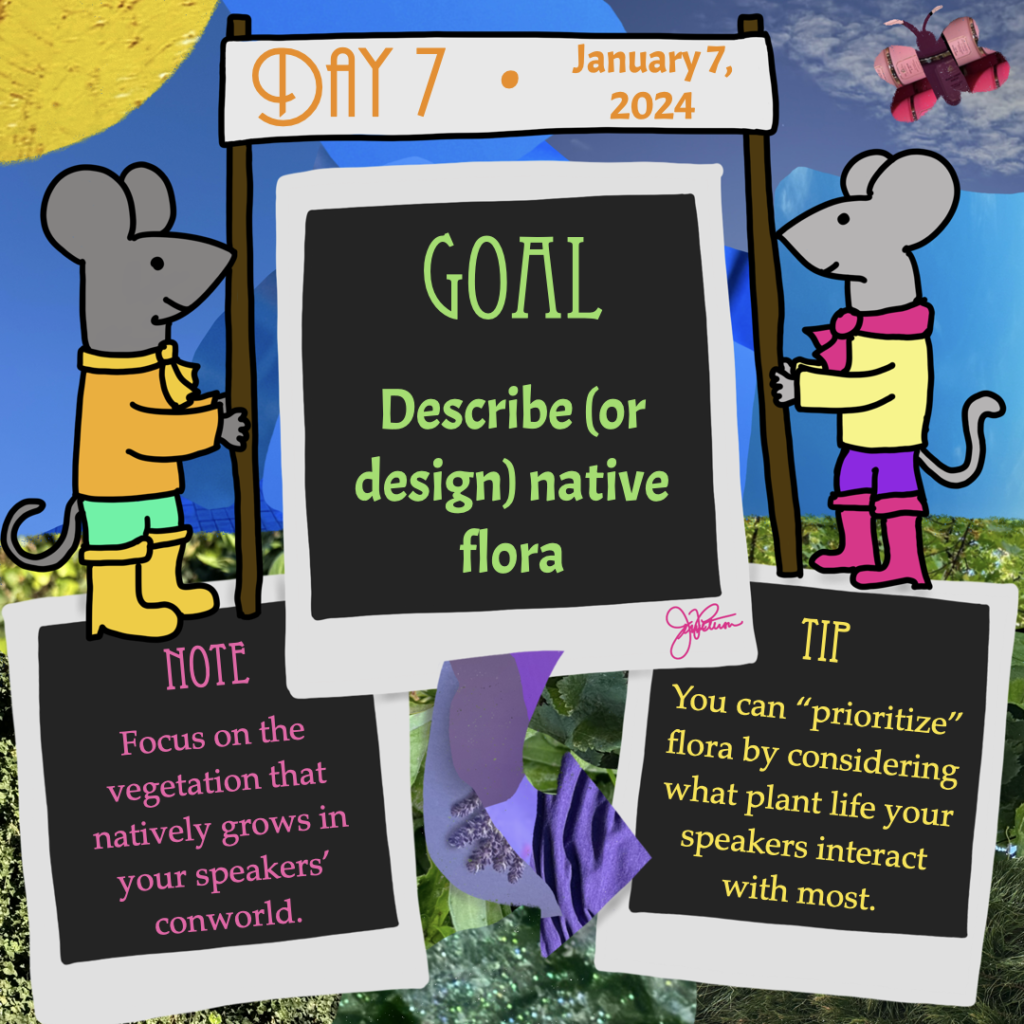
Goal: Describe (or design) native flora
Note: Focus on the vegetation that natively grows in your speakers’ conworld.
Tip: You can “prioritize” flora by considering what plant life your speakers interact with most.
Work focus: Create/Make/List
You’ve described basic features of your conworld, including its terrain, climate, and common weather patterns. Now you will shift your focus to the vegetation, which is intimately connected with the terrain and climate of your conworld. Going back to the desert planet example from yesterday’s prompt, having a desert world naturally limits the types of plant life that can grow in the dry environment of the desert. If my speakers lived in such an area, they would likely encounter plants like cacti and other succulents that can thrive with little to no water. There may also be types of wildflowers that natively grow in the area, and perhaps even trees (like the Joshua Tree) that, like cacti, have built-in mechanisms to store water for long-term use. In a desert world, your list of native flora may be limited.
On the other hand, if your speakers are situated in the jungle, it may feel like you have no end to the list of flora in the world. In situations like that, it’s good to prioritize what you list, focusing on the most prevalent flora, such as trees* whose branches are used to build structures, plants that provide food, and poisonous plants or fungi that are to be avoided. These more prominent flora are the ones you will want to focus on when you start creating vocabulary in later prompts.
If your world is not based on Earth or an Earth-like location, you may be designing your own flora. If that’s the case, you should sketch out images of the vegetation you want to incorporate in your conworld. At this stage, they won’t have any names and will only be represented by the sketches you create. If you aren’t a fan of drawing, you can instead list the prominent features of each major type of flora you want to create. As you sketch or list the features of the flora, you might also want to make notes about how your speakers interact with these plants, whether they use the plants for food, structures, or religious ceremonies.
*If you are a native English speaker, it may seem counterintuitive that some languages don’t have a basic root that just means “tree” (as in, any kind of tree). Rather, some languages have roots for specific types of trees and then a more generic word for “plant” that can be modified or extended to refer to trees not belonging to the specific types they have words for. So if your speakers are in a forested area, think about listing the types of trees there are in the world to support later decisions you’ll make about which flora will be represented by roots in the basic vocabulary of your language. The types of trees may be more general, such as deciduous versus coniferous trees. But they may also be very specific, such as red oaks, white oaks, dogwoods, cherry blossom trees, pine trees, cedar trees, and so on.
